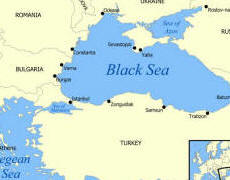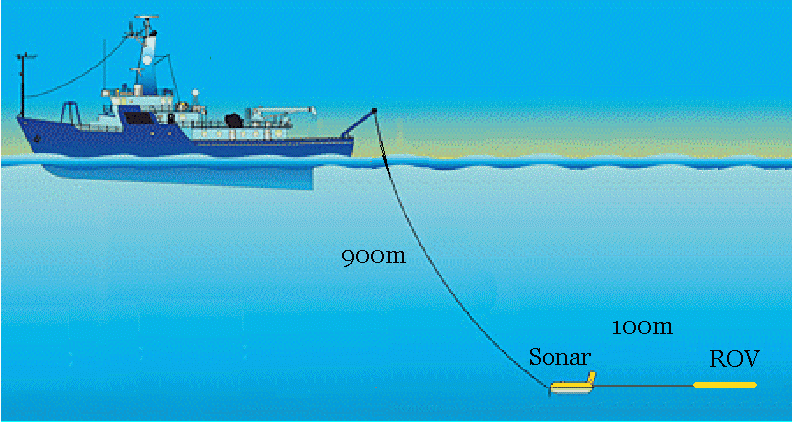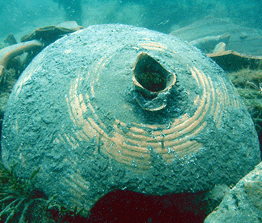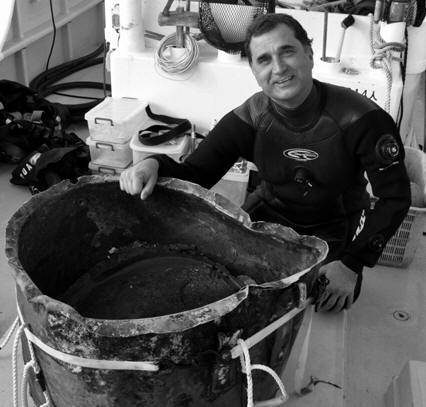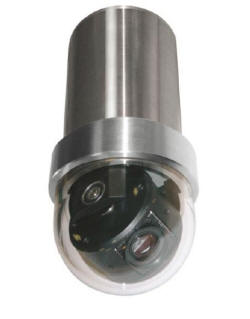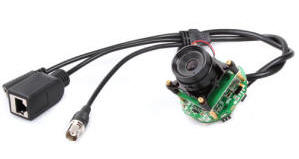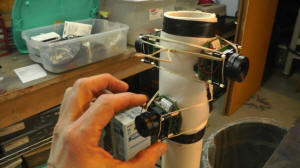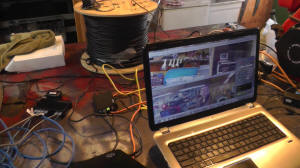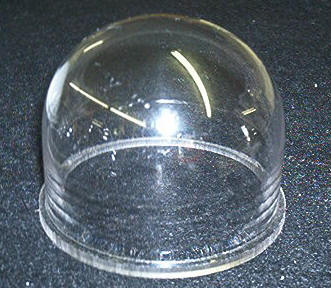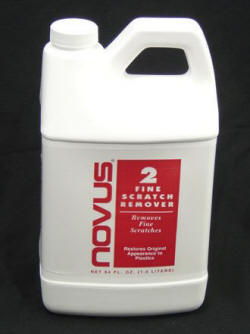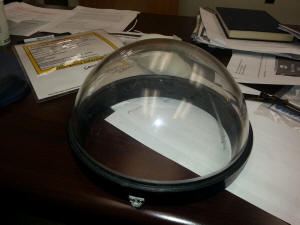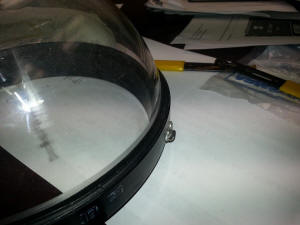Cameras
With a 4" OD hull and a 1/2" thick acrylic dome the an PTZ Camera inside the dome would need to be less than 3 inches and we have not been successful locating an affordable Pan/Tilt/Zoom camera that small. The unaffordable option is the P-DTR-100-Z which outputs composite video. And you still need to digitize that in order to pipe it to the surface.
The next camera to test is the 3 Mega Full HD 1080P Network IP
Board The camera defaults to a fixed IP address of 192.168.1.168, and the default account and password is "admin". The VMS (Video Management Software) provides with the IP cameras on a CD provides
live viewing for all four or any one selected camera, recording at
full HD, playback of the recordings with a slide bar to quickly
locate segments of interest and still Jpeg snapshots from the
recordings.
Tested 4 cameras over 4000 ft of single twisted pair with resolutions at 800 x 600 on 3 cameras and 1024 on one.
CAMERA DOME
The quality of camera dome we use will greatly impact the quality of the images provided by the PTZ camera. No only does the dome need to withstand 1700 psi, but it must also be a precise half sphere with a consistent wall thickness, otherwise there will be noticeable distortion in the image especially as the operator pans or tilts the camera. EZ Tops is going to make some sample domes for us to test with the camera but these domes will only be 1/4" thick wall acrylic. They will be fine for shallow water testing but very unlikely to survive 1700 psi at 3000 ft. but we will put them in the hyperbaric test chamber and find their failure depth.
A heavier, and higher quality dome will need to be cast or machined.
As casting is beyond the capability of our small shop we are going
to machine a dome from a 4" round rod of cast acrylic. Then
polish it with 400, 600, 1200, and finally 2000 grit wet sand paper.
A 4" diameter cast acrylic rod cost about $210 per foot. A
couple of feet should yield about 4 domes less those that we will
inevitably destroy during machining or depth testing and we will end
up with one or two usable domes.
Andrew Girard provided these photos for a dome used on the Benthos Sea Rover ROV circa 1986. The acrylic dome to potted to an aluminum ring using 3M 5200 Marine Sealant. And the mounting ring is held to the hull of the ROV using two toggle latches that compress an o-ring. Andrew also shared an account when the toggle latches failed in the Antarctic after the ROV that had been in sub-zero conditions on deck was lower into the relatively warmer water. The water warmed the air inside the ROV causing it to expand and pressurize the unit enough to pop one of the latches. |
